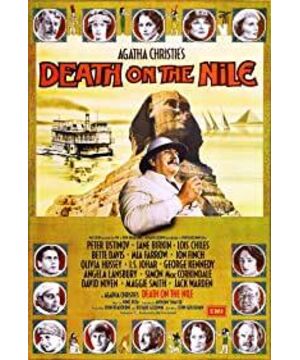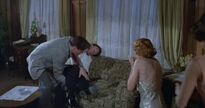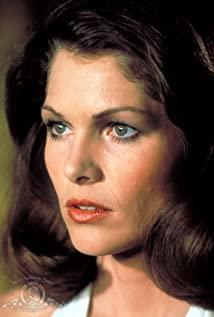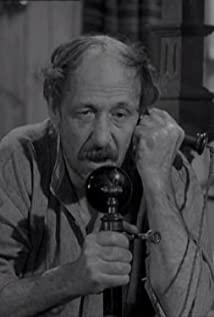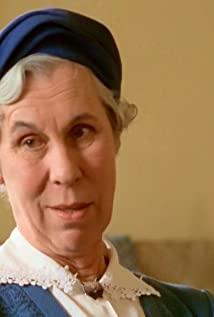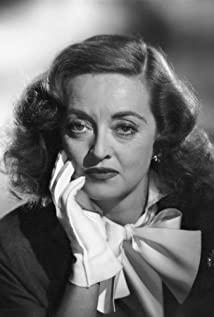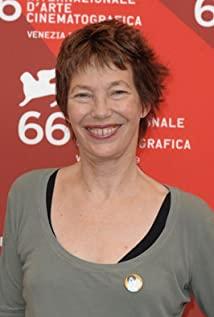Based on the novel by famous detective novelist Agatha Christie. Agatha Christie's detective novels are known for their well-conceived, bizarre plots and meticulous reasoning and analysis. In the West, she is as famous as the British detective novelist Arthur Conan Doyle. The detective Poirot portrayed by Agatha Christie in the series has become a symbol of wisdom like Conan Doyle's Sherlock Holmes. The film more detailed, accurate and comprehensive expression of the writer's creative style and creative characteristics.
"The Tragedy on the Nile" has made great efforts in the artistic conception. The film does not fall into the mystical or grandstanding stereotypes of similar Western films, nor does it have low-level boring exhibitions on brutality and pornography. The "Karnak" cruise ship sailing on the Nile gathered all the people who might have murdered Linnett, who had huge assets. At the beginning of the film, the director used a considerable amount of space to describe and highlight the mentality of various people. These people expressed their different relationships with Lynette in different attitudes and ways. Some of them were damaged by Linnett, some were slandered by her, some were made servants after being bankrupted by her father, and some were self-proclaimed "Marxists" who wanted to "kill" Linnett. The most obvious The one who wanted to take revenge on Linnet was another woman, Jackie, who had snatched her lover from her. She followed Lin almost all the time. In this way, the film sets off the atmosphere, renders the environment, and plays the role of ingeniously setting up suspicious clouds and wonderful mists. After that, the creators used a step-by-step approach to push the plot to a climax. If the previous scene was a confession and foreshadowing, in the restaurant, Jackie slammed her former lover and now Lynette's husband with a shot to execute "love revenge", and the scene began to take a sharp turn. Then, in the middle of the night, there was another gunshot, and Linnett was shot to death. Then, Linnett's maid was killed by slitting her throat in a strange and cruel way. From injuring one person to the death of three people, the case immediately became more complicated. It is like building a dam in a turbulent river, the water potential is intercepted, and the dam may be washed away at any time. This artistic technique is called "gathering" in creation, and its purpose is to enhance the urgency of the plot. So far, the film has relied on this technique to successfully capture the audience, forcing the audience to be anxious and excited about the bloody reality happening in front of them, and to think: Who is the real murderer?
As a detective film, logical reasoning is essential. But logical reasoning is often boring. In the visual image-based movie screen, large sections of case-solving analysis are difficult to attract audiences. In order to eliminate the shortcomings of detective films in this film, in addition to the above-mentioned use of ingenious doubts and mists, the writers and directors strengthened the sense of urgency of the plot before reasoning, and evoked the audience's eagerness to know "Who is the murderer?" In addition to his desire, he has made efforts in the following two points in particular, and has achieved effects that are not easy to obtain in similar films, making the film novel and vivid, and attracting audiences from beginning to end.
First, arouse the audience's awareness of participation. From the beginning of the film, the great detective Poirot is placed in the development of the story. Poirot is not a simple reasoner after the event, but is among the participants of the event from beginning to end. This conception is crucial to mobilizing the audience's sense of participation. In effect, Poirot represents the audience in the film. The audience is unconsciously putting themselves in Poirot's place. Like Poirot, they observed the various people on the Carnac cruise ship. Poirot's thinking is the audience's thinking, and Poirot's analysis and judgment are actually the audience's analysis and judgment. With the help of Poirot, the choreographer followed the audience's thinking and psychology to think about the case, and led the audience's thinking and analysis into the "wrong way" without any trace, and finally made the audience produce "unexpected" effects.
Second, the use of film means to reason in suspense. In order for the audience to have a strong interest in immersing themselves in the reasoning, a strong suspense must be created. After three people died in this film, "who is the murderer" has become an urgent emotional and psychological need of the audience, and has become the general suspense that promotes the development of the plot. Under the command of the general suspense, every person who may become a "murderer" becomes a small suspense one after another. Poirot's reasoning and retrospective are not dry language explanations, but cinematic visual means. Every possible murderer followed Poirot's language reasoning to "act" on the screen how they each shot Lynette. That is to say, "verbal reasoning" has been transformed into "image reasoning" on the screen, and fast shots are used to make it more in line with the characteristics of detection films, and the audience feels both nervous and real. With the frequent activities of the murderer, there are more and more flaws. Poirot finally convincingly dispels the cloud of suspicion, throwing aside the "possible" murder suspects who are not actually murderers, and deduces that the real murderers are Lynette's husband Simon and his co-conspirator, a former lover. jackie. This conclusion is unexpected and reasonable. Cinematography aids the audience's thinking and reasoning process and makes this process full of entertainment.
What is rare is that "The Massacre on the Nile", as a detection film, the director did not blindly lay out the plot, but paid attention to the portrayal of the characters. Poirot in the film is smart, composed and humorous, and his personality is quite distinctive. Especially at the end of the film, he starts with details such as muddy wine, shawl with bullet holes, nails with red ink, etc., and contacts the special language of some people, explores the subtleties of hair, and finds out the analysis of its inner connection, which is accurate and appropriate. , shows the true charm of the great detective with great powers. Peter Ustinov, who plays the role, is a multi-talented artist who is both a screenwriter, a director, and an actor. He has won two Academy Awards for Best Supporting Actor for his successful performances in "Spartacus", "Topkapi" and more. In this film, his performance has reached a new level. In addition, the film's depiction of the other two characters, Simon and Jackie, is also unique. The film not only writes about the cruelty, cunning, and sophistication of their murder, but also strives to write about the internal causes of their criminal activities. In the end, after the despair, the two embraced each other in the suicide ending of shooting and killing each other, highlighting the murderer's "loyalty to love" side and showing the complexity of the characters' inner world. In particular, it should be pointed out that the dialogues of the characters in this film are full of literary color and sense of humor, and throughout the film, it has also become an important factor in attracting audiences to appreciate the work with relish.
The yacht "Karnak" is a microcosm of capitalist society. Despite his great powers, the great detective Poirot still has a series of crimes happening around him, and people still die one after another. At the end of the film, Poirot looked at the still-beautiful Nile River, and sighed softly. Colonel Reis looked around and said that his "woman's greatest wish is to want someone to love" - this sarcastic line expresses the creator's helpless feeling that this criminal reality is difficult to explain correctly.
View more about Death on the Nile reviews


